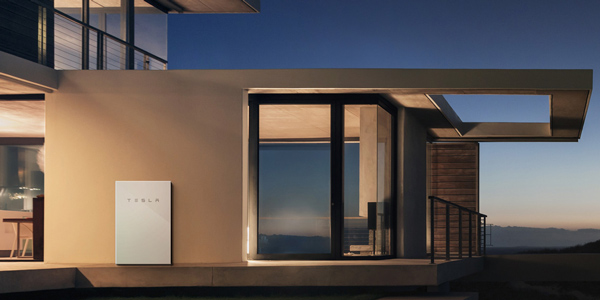By Steve Huntoon
We all follow Elon. (He’s ubiquitous.) Tesla buys — or bails out — SolarCity to create an even grander vision of integrating electric cars, solar panels and batteries.
Next will be Tesla/SolarCity buying SpaceX so the integrated electric cars, solar panels and batteries can be transported to those new Martian communities. All aboard![1]
I wrote before about why Elon’s Powerwall home battery made no sense.[2] Remember Elon saying he had 38,000 orders for the Powerwall 1, with installations to begin in October … of 2015? And announcing a new version, Powerwall 2, last year with twice the specs — but at twice the cost?[3]
What is Tesla actually delivering? From Tesla’s first-quarter 2017 letter to shareholders: “In Q1, we installed 60 MWh of energy storage, including a 52-MWh storage project for Kauai Island Utility Cooperative (KIUC) in Kauai, Hawaii.”
So subtracting the Hawaii project using utility-scale Powerpacks, Tesla installed 8 MWh of Powerwalls and other Powerpacks. If the 8 MWh was all Powerwalls, then worldwide sales of the Powerwall were 571 (8,000 kWh divided by 14 kWh per Powerwall).
That is a pittance.
There’s also a huge reality gap for the combined Powerwall/Powerpack business. In August 2015, Elon said revenue in 2017 for this business would be “probably at least a few billion dollars.”
From Tesla’s first-quarter 10-Q we can determine that its Powerwall/Powerpack gross revenues were $5.244 million. Annualized: $21 million.
That’s less than 1% of what Elon claimed they would be two years ago. Maybe the first quarter was anomalous. Maybe not.
The fundamental problems with the Powerwall bear repeating.
As a backup generator, the Powerwall is uneconomic and impractical relative to conventional backup generators. Tesla quietly abandoned the backup version of the Powerwall because it made no sense relative to conventional backup generators.[4]
As a cycling generator, there is no value added where net metering is available, because net metering effectively provides storage for free. Rightly or wrongly, net metering remains widespread in the U.S.
Elon acknowledged the value problem in 2015 in explaining why SolarCity wouldn’t offer the cycling version of Powerwall 1. As Bloomberg headlined in May 2015, “Tesla’s New Battery Doesn’t Work That Well With Solar.”
But later, to justify Tesla buying SolarCity, Elon reversed course, saying battery plus solar is a match made in heaven. Confused? So was I.
Powerwall 2, with or without solar pairing, continues the intractable problem of one foot in the canoe, and one foot in the boat.
As a backup generator, it is uneconomic and limited relative to conventional backup generators.
As a cycling generator with solar, it is uneconomic in comparison with net metering that effectively provides storage for free.
At the end of the day, Powerwall 2’s only hope is the demise of net metering … the net metering that the SolarCity business needs to survive.[5]
Isn’t it ironic?
[Editor’s Note: RTO Insider offered Tesla an opportunity to respond to this column on May 15. Although a company spokeswoman claimed the column contained “multiple inaccuracies” the company had not provided any rebuttal as of deadline.]
Steve Huntoon is a former president of the Energy Bar Association, with 30 years of experience advising and representing energy companies and institutions. He received a B.A. in economics and a J.D. from the University of Virginia. He is the principal in Energy Counsel, LLP, www.energy-counsel.com.
[1]We may want to await proof of concept. As Elon said: “I’d like to die on Mars. Just not on impact.”
Speaking of proof of concept, Elon’s latest and greatest is “Neuralink,” which involves implanting electrodes in the brain to enable communication with computers. My immediate reaction: When you think about the damage hackers can do to your computer, imagine what they can do when they hack into your brain. How much bitcoin ransom is that going to cost?
[2]http://energy-counsel.com/docs/powerwall-follies.pdf.
[3]Speaking of cost, here’s a fun question: What costs more, a Powerwall or the equivalent capacity in rechargeable “D” batteries (yes, those flashlight batteries)? If you answered the D batteries, congratulations. A Powerwall is $6,200 (without installation) with 13.5 kWh of capacity. Rechargeable NiMH D batteries have 11.4 Wh, so it would take 1,184 of them to provide 13.5 kWh of capacity. At $5 per battery, the total cost is $5,920.
[4]Tesla continues to promote the Powerwall as providing cycling and reliable backup power even though it is inherent in cycling that the battery will be partially or fully discharged most of the time. And even if fully charged when a utility outage occurs, the battery supply is of limited duration — unlike natural gas backup generators.
And here’s something to check out: On the order-your-Powerwall page here, https://www.tesla.com/powerwall#design, you can select a two-bedroom home using 20 kWh/day. For the option of supplying the entire home for one day, Tesla recommends one Powerwall. How does a battery with 13.5 kWh maximum usable capacity supply 20 kWh? It must be magic.
Not to mention that just the air conditioner for a two-bedroom house of maybe 1,500 square feet is going to exceed the 5-kW continuous rating of one Powerwall. More Musk magic I suppose.
[5]Of course energy storage is only a part of Tesla (a very small part as shown earlier). As for the cars, the bull-bear debate rages over whether Tesla is the next Apple or the next DeLorean. For millennials wondering who/what DeLorean is, here’s a good history lesson: http://blog.caranddriver.com/back-to-the-future-the-rise-and-fall-of-the-delorean-motor-company/.




